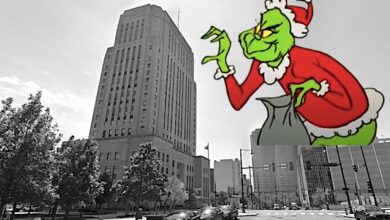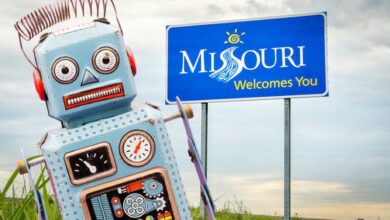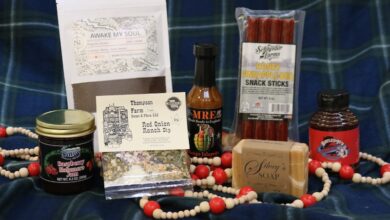Thanks to financial grant, Missouri folklore being put on the map
Every community in Missouri seems to have its own folklore that is passed down from generation to generation. A recent grant will enable the state to erect signs commemorating some of those legends.
The Folk Arts Program at the University of Missouri-Columbia has joined the Pomeroy Foundation’s Legends & Lore Marker Grant Program.
“We’re trying to encourage people to think about what’s local and if they can get some community buy-in about something they’d like to celebrate or commemorate in some way,” Lisa Higgins, director of the Missouri Folk Arts Program told KCUR Public Radio.
“Applications that weren’t based in historical fact but were important stories for the community, which generated the idea to have a folklore-related roadside marker program,” said Deryn Pomeroy, director of strategic initiatives.
 Higgins said Missouri is packed with rich folk tradition in many forms, like Kansas City jazz; St. Louis blues; Ozark, Little Dixie and Missouri River Valley fiddle music; pockets of German communities in places like Perry County; and French communities like one near Potosi. It also boasts ghost stories and monster legends like the Momo the Missouri Monster and the Blue Man, as well as many tantalizing murder tales.
Higgins said Missouri is packed with rich folk tradition in many forms, like Kansas City jazz; St. Louis blues; Ozark, Little Dixie and Missouri River Valley fiddle music; pockets of German communities in places like Perry County; and French communities like one near Potosi. It also boasts ghost stories and monster legends like the Momo the Missouri Monster and the Blue Man, as well as many tantalizing murder tales.
Existing markers in other states commemorate nationally known stories like Ichabod Crane and the Legend of Sleepy Hollow in New York, and the story of African-American folk hero John Henry in West Virginia.
The Pomeroy Foundation is a private grant-making foundation based in Syracuse, N.Y. It has coordinated New York’s historic roadside markers program since 2006.Ten other states already have begun erecting signs in spots that mark their favorite stories; Missouri joined in the spring, but the pandemic overshadowed the first application period. The current application deadline is October 2.
Legends and Foklore guidelines include:
The most successful Legends & Lore grant applications will likely include the following common genres of folklore:
- Myths — traditional stories that usually concern the nature of the cosmos; they often involve divine and supernatural beings.
- Legends — traditional stories that usually concern historical events; they often involve heroes, heroines, villains, and monsters, including ghosts or haunted places.
- Tall tales — traditional stories similar to legends that exaggerate the lives of local people.
- Folktales — traditional stories such as fables and fairy tales that occur “outside” of cosmic or human history; they often involve animals or symbolic creatures as the main characters.
- Place-name anecdotes — traditional stories that explain the reason for the name of a location.
- Folksongs and ballads — traditional stories told in song that often convey myths, legends, and related folklore.
- Superstitions — folk beliefs that may or may not have scientific accuracy but that are important to the community that believes in them.
- Festivals, holidays, parades, and rituals that represent a community.
- Certain dances, music, architecture, foodways, arts, crafts and similar performances can be folklore if they distinguish the community or region as the “home” of the item or activity.
Higgins said she looks forward to the signs that will be erected in Missouri, most likely in early 2021, in time for the state’s bicentennial. She says this kind of exploration “gets you out of the house and off the main roads into some really beautiful parts of the state to kind of visit and learn more about another aspect of our history and culture.”
Communities with an interesting story to tell can apply for the grant HERE.
–Dwight Widaman | Metro Voice







